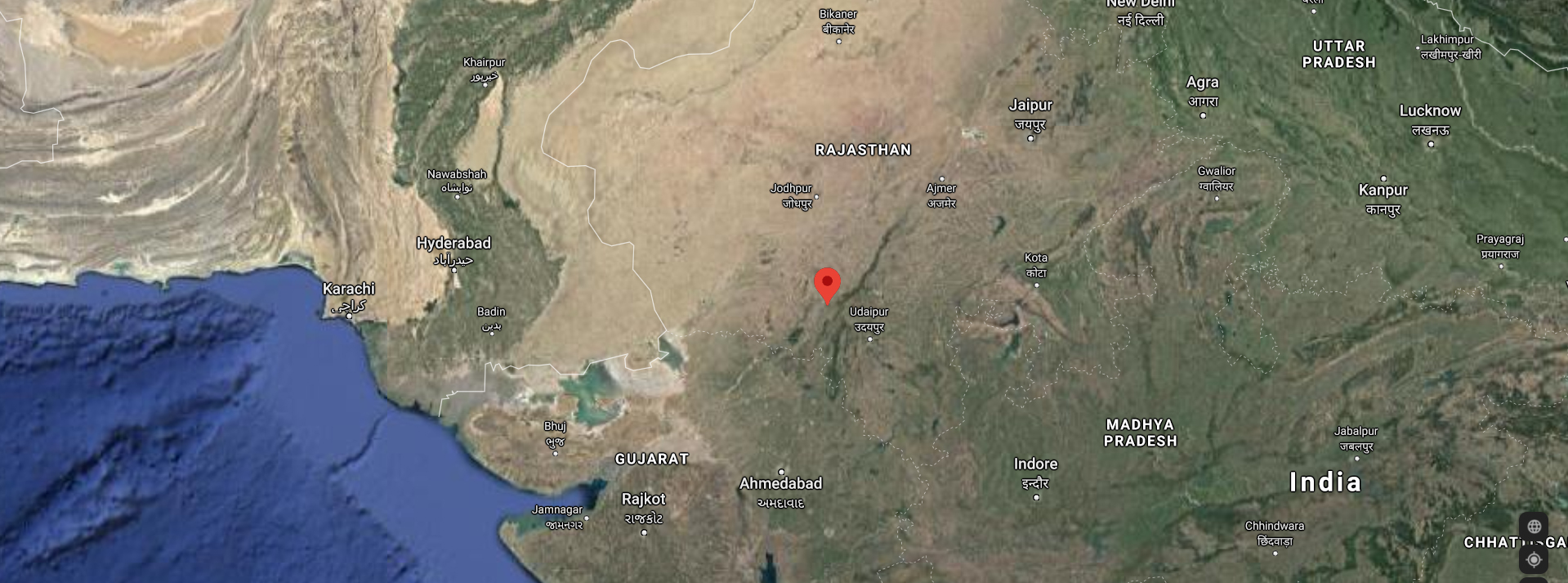 In Rajasthan, evidence of human habitation of 1 to 4 lakh years ago has been obtained from Didwana, from the valley of Luni river of 1 lakh – 40 thousand years, and from Bagore, Tilwara, etc. from 5 – 10 thousand years ago. The culture flourished on the banks of the Pachmatra and Banas rivers of Kalibanga (Harappan) and Mewar 5000- 3500 years ago.
In Rajasthan, evidence of human habitation of 1 to 4 lakh years ago has been obtained from Didwana, from the valley of Luni river of 1 lakh – 40 thousand years, and from Bagore, Tilwara, etc. from 5 – 10 thousand years ago. The culture flourished on the banks of the Pachmatra and Banas rivers of Kalibanga (Harappan) and Mewar 5000- 3500 years ago.
The Ahar Banas culture, close to its region, was contemporary to the later period of the Indus Valley Civilization. Both these civilizations had trade relations. This region is located to the south of the Matsya region described in the Mahabharata (about 5000 years ago). The period between Lord Neminathji and Lord Mahavira (2400 – 3000) years ago is called the Mahajanapada period. During that period, this region was a part of the Kuru, Matsya, and Surasen Mahajanapadas at different times.
In that period, Lord Mahavir visited this area. One of the upsarg site is the present-day Bamanwad tirth.
There is mention in the books of Jainism “नाना,दियाना,नांदिया जीवित महावीर स्वामी विचरिया”
After that, the region was a part of the Nanda Dynasty and the Maurya Dynasty. After the fall of the Maurya dynasty, in the second century AD, foreign powers took control of the region. After the fall of the Shaka empire, for some time the Kushans, and later from the third century to the fifth century, the whole region remained part of the Gupta empire. After the decline of the Gupta dynasty, foreigners adopted Hinduism and ruled till the middle of the sixth century. But the Gupta dynasty defeated them and once again took the region under their control. After the fall of the Gupta dynasty at the end of the sixth century, the whole state remained divided into small states for some time. From the middle of the sixth century to the eighth century, the Gurjara pratiharas initially took over the entire state by making Srimal the present-day Bhinmal and later Kannoj as the capital. At one time, his rule extended till Bihar. In the ninth century, the Rashtrakutas of the south started attacking the Gurjara Pratiharas to take over the region. There were wars for a long time for supremacy in the Rashtrakutas and Gurjara Pratiharas. Gurjara Pratihara rule slowly, gradually weakened and the entire vast kingdom was divided into smaller states.
Amoghavarsha I (800-878) was a very powerful emperor in the Rashtrakuta dynasty. He was a Jain religionist. He is compared to Chandragupta Maurya. His descendant and a Rashtrakuta Samanta Hari Verma took over Hathundi (Ratamahaveer Ji Bijapur) in 880 AD. At that time, the entire area including the fleet came under his control.
At the end of the third century, Shrestha Virdev created and Acharya Sidhesen Surishwarji built, the present temple of Lord Mahavira. This is mentioned in the history (Purvadha) of the tradition of Parshvanath Bhagwan. This temple is around 1700 years old.